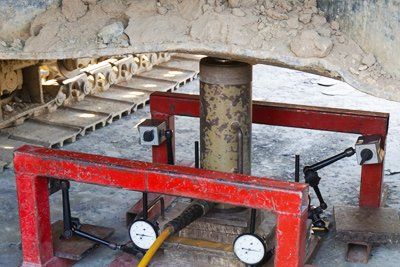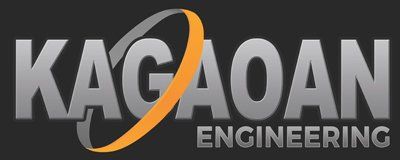Forensic Studies
Geotechnical Forensic Studies NYC, Manhattan, The Boroughs, Nassau County, Suffolk County, Long Island, and New Jersey - Kagaoan Engineering

Forensic Geological Investigations
When structures and soil experience failures, buildings shift, and groundwater tables cause damage, geological forensic engineers and experts delve deep into the data to find out the initial cause. Subsequent effects are other important factors these professionals identify and translate for property owners, developers, civil engineers, and expert witnesses. These technical workers often specialize in smaller niches like vibration studies, marine investigations, foundation design, and soil mechanics.
Contact us for free consultation.
Kagaoan Engineering hires engineering specialists to form a dedicated team of forensic investigators to assist with litigation, soil investigations, data interpretation, site modeling, and teaching others about the technical aspects of engineering, soil components, and load forces. We develop case studies and provide technical documentation for civil suits requiring forensic proof and expert testimony about blame and payment responsibility. Insurance firms and attorneys use these professionals to corroborate owner accounts and prove event timelines.
What are Geotechnical Forensic Studies?
These investigations involve researching deep into weight limits, soil shifting, crack width, and other technical parts of construction sites, buildings, and underground layers. The experts who understand this data and how forces like weight, wind, and displacement affect the soil and structures help translate this information for construction teams, project managers, and civil engineers. Municipal entities often hire geotechnical engineers for finding out the causes of foundation issues, cave-ins, collapses, and system failures.
Building Scientific Models and Analyzing Data
An essential part of organizing forensic studies is developing clear interpretations of the situation. Maps, graphs, charts, 3D diagrams, ground composition models, and structural patterns help everyone see the problem from many angels. This modeling makes civil cases and forensic investigations easier to understand since each individual learns in different ways. Many expert witnesses need to know the terminology of geological studies and how to spell these words for the court.
Forensic reports attempt to answer questions about why soil or a structure experiences a failure. Typical reports are useful for predicting soil displacement and potential breaches. For juristic events, a different line of questioning helps investigative teams get to the root of the problem.
- What is the source of the failure or issue?
- What events led up to the breach?
- Who is at fault?
- How do we fix the repairs?
- Who is responsible for paying for the fixes?
- Geological forensic studies may involve assisting litigation teams
When a builder, engineer, or construction firm is under investigation, geotechnical experts can provide professional opinions in court. These experts help the court understand the difference between bearing inflection, vertical displacement, and soil erosion. Rates of decline and cause-and-effect timelines help judges, juries, attorneys, and professional teams to answer questions and put the situation in terms everyone can comprehend. Deciding who is at fault requires everyone on the case knowing the details of the problem and the forces acting on the situation. Sometimes reverse engineering the problem can help solve the case.
Responsibilities of Forensic Geological Investigation Teams
A forensic investigation involves many components. Field surveys give visual proof of the situation. Preconstruction geological engineering prediction reports need reviewing. The team must also look at architectural blueprints and engineering drafts to get a complete picture of the initial project expectations. Looking at boring reports, pile capacities, deflection surveys, floor elevations, soil composition, and site breeches also gives the forensic team a comprehensive look at the situation from concept to site breakdown. Additional borings at lower depths or in other areas may offer additional insight into the situation. Definitions of important geotechnical terms:
- Shear resistance - Shear force is easy to understand when thinking of scissors cutting paper. The force the scissors apply to the paper until the material separates is the resistance. We measure this force as the load experienced during the sliding motion. The force it takes to cut the paper is the maximum resistance.
- Load-deflection - This term refers to how far a building or soil structure like a retaining wall moves from the original position. This measurement may be a distance in length or angle of deviation. Wind load is another component when looking at tall structures like skyscrapers and towers.
- Slope stability - The definition of slope stability means how much force can an angled wall, structure, or soil pack stand before deviating from the position. For example, how long a bridge can withstand soil movement from a landslide before failing. Another way to visualize this measurement is by finding out how high can one build a retaining wall before rainwater causes it to weigh too much.
- Vertical strength capacities - This definition means how stable a tower or tall building is as the height increases. Finding the point where the load becomes too heavy for the height is where vertical strength applies to geotechnical investigations.
- Height comparison studies - The difference between the height of various buildings on a property may help determine failure points. These studies can point to uneven loads and places where ground shifting exacerbates the problem.
- Ground densities - The thickness of each individual layer of soil. The investigation will provide measurements, densities, and nominal displacement for each soil type like clay, bedrock, and limestone.
At Kagaoan Engineering, we are proud to provide expert analysis for geotechnical studies. Our experts have years of experience in witness testimony preparation and forensic modeling. For more information about this field, or for assistance with an investigation, please call us at 516-208-1533, or use our contact form.
About Kagaoan Engineering
Every member of Kagaoan Engineering is an experienced professional who brings distinct strengths and specialities to the company. We work together as team to ensure that your project has the skill sets required to succeed.
Copyright 2017 The Kagaoan Engineering. All Right Reserved. Art Commercially Licensed by Shutterstock.

